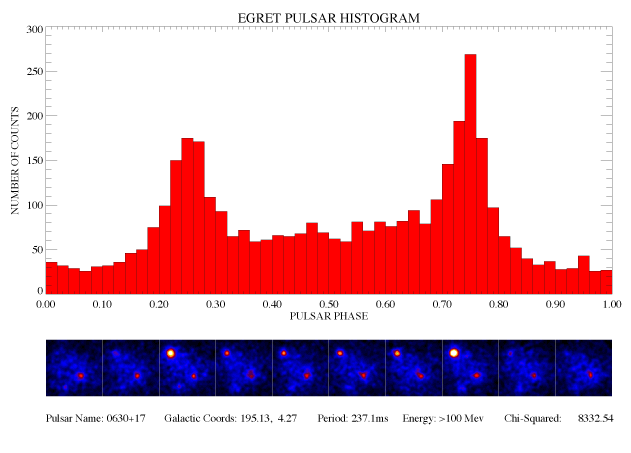Lightcurve of Geminga

(Credit: P. Sreekumar (NASA/GSFC)
The Geminga pulsar is one of the brightest gamma-ray sources, but is
only a weak X-ray source and has little (if any) radio or optical
emission. This figure shows how the gamma-ray brightness of Geminga
changes during one complete rotation of the neutron star, which takes
about 1/4 second.
Top figure: the number of high-energy gamma rays seen
by the EGRET instrument on the Compton Gamma Ray Observatory during the
neutron star rotation. Although Geminga is particularly bright twice in
each rotation, it never completely "turns off."
Lower figure: map of
the Geminga region of the sky as the pulsar rotates. Geminga (upper
left) changes brightness dramatically, while the Crab pulsar (lower
right) appears to remain steady (the Crab rotates much faster than
Geminga, so its variation cannot be seen in this set of figures).
Click here
gif version
|
|
Additions or Comments:
Have we left anything out? Is there something you would like to have added
to this page (a link to your own group's research page, for example...)?
|
IMAGES |
By Mission |
Stars |
Cataclysmic Variables |
X-ray Binaries |
Pulsars |
Supernova Remnants & Planetary Nebulae |
Galaxies |
Active Galactic Nuclei |
Clusters and Groups of Galaxies |
X-ray/gamma-ray Background & Deep Fields |
Solar System Objects |
Gamma Ray Bursts
HEASARC Home |
Observatories |
Archive |
Calibration |
Software |
Tools |
Students/Teachers/Public
Last modified: Thursday, 26-Jun-2003 13:48:45 EDT
| 

